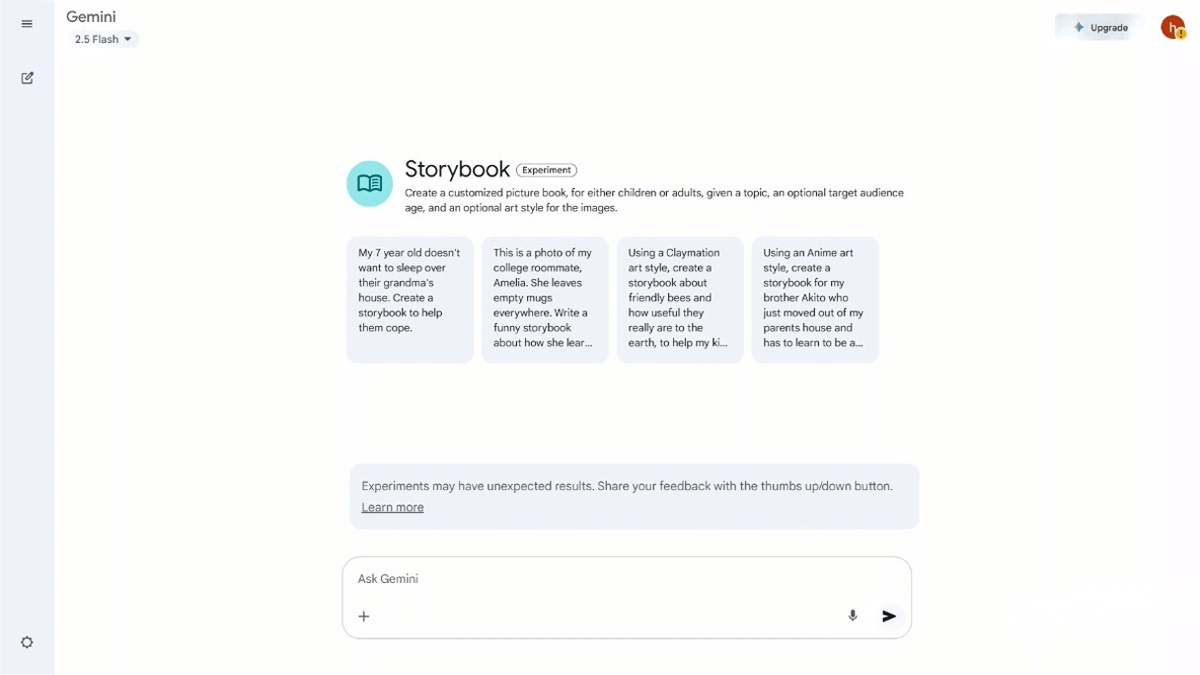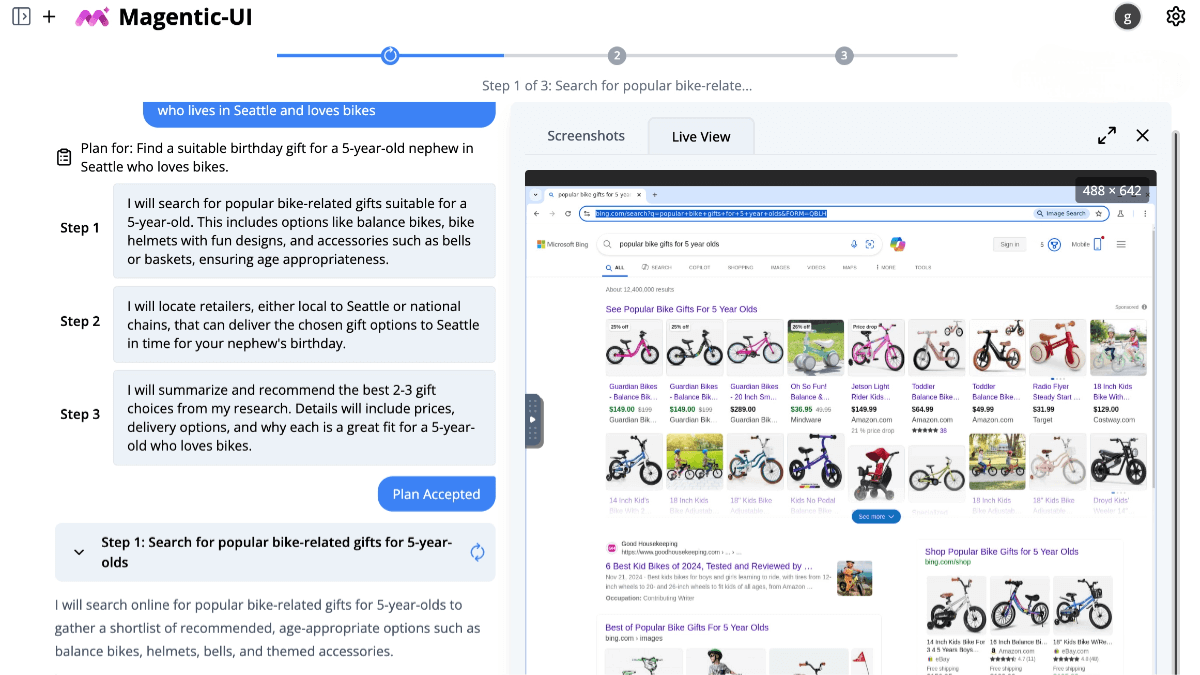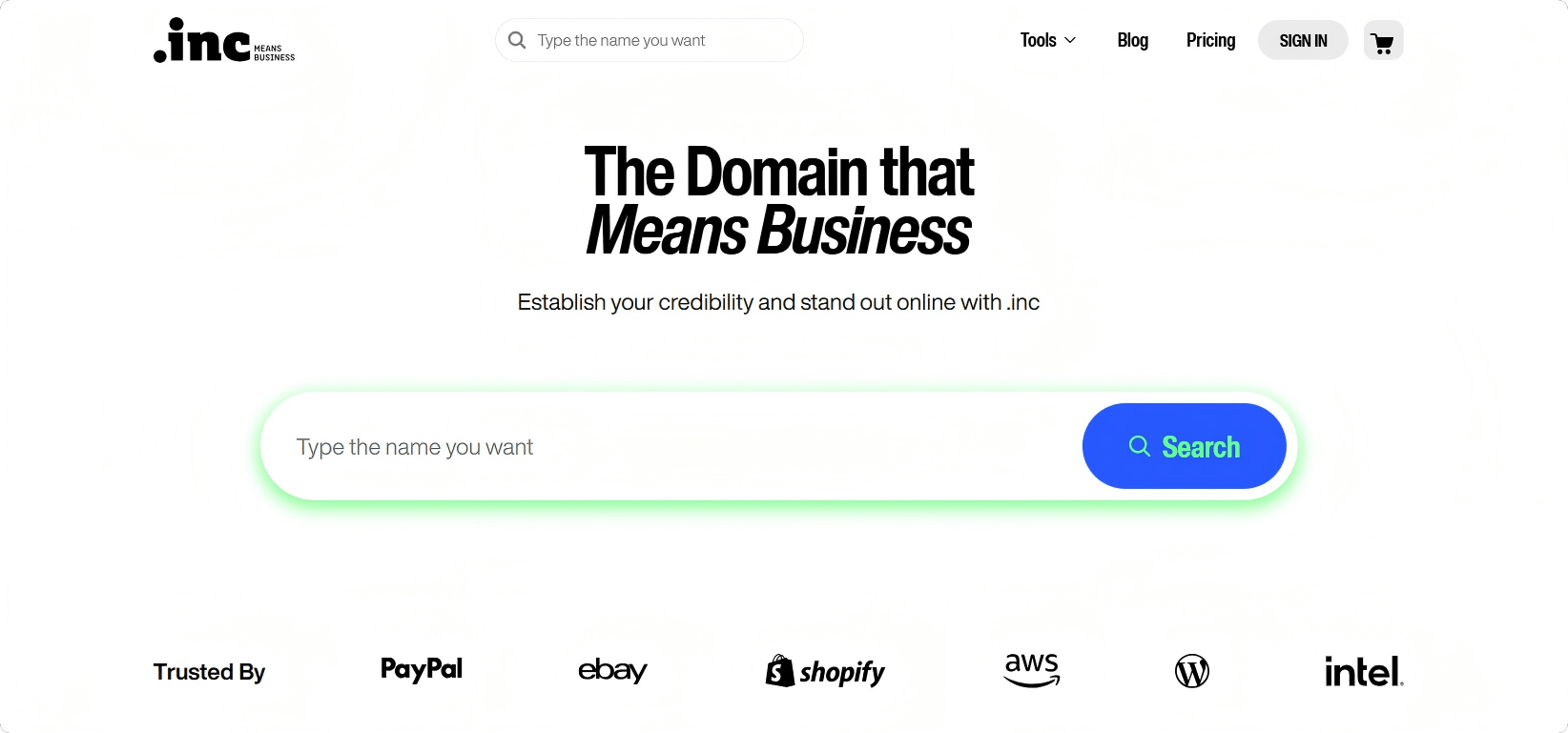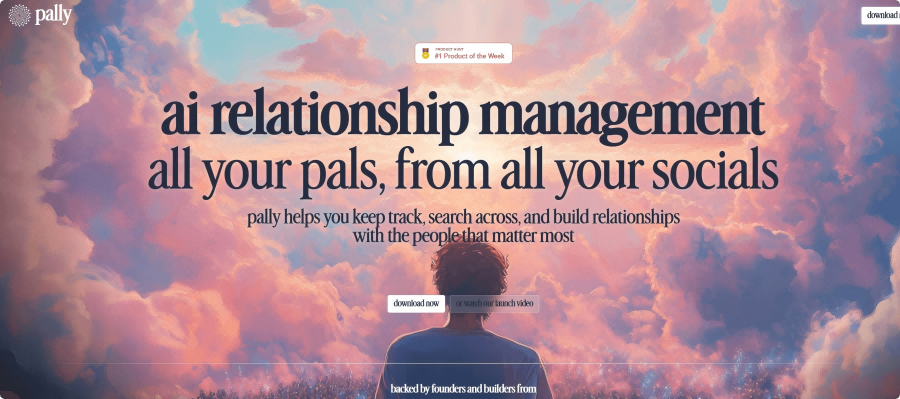Retrieval-Augmented Generation (RAG) systems combine large language models (LLMs) with retrieval mechanisms to generate high-quality responses with contextual relevance. While traditional RAG demonstrates excellent performance in knowledge retrieval and generation, it still has limitations in handling dynamic multi-step reasoning tasks, adaptive adjustments, and orchestrating complex workflows.
Agentic RAG has brought about a major revolution in the field of artificial intelligence by introducing Agents into the RAG process. This approach enhances the autonomy of RAG, enabling AI to more intelligently adjust strategies and optimize processes during retrieval and generation.
This article serves as a supplement to the survey paper *”Agentic Retrieval-Augmented Generation (Agentic RAG): A Survey On Agentic RAG”*, providing the following in-depth insights:
◦ Core Principles and Modes: Introduces the fundamental concepts of Agentic RAG and its core Agentic modes, including reflection, planning, tool use, and multi-agent collaboration.
◦ System Classification: Constructs a detailed classification of the Agentic RAG framework, covering various architectures such as single-agent, multi-agent, hierarchical, corrective, adaptive, and graph-based RAG.
◦ Comparative Analysis: Systematically compares traditional RAG, Agentic RAG, and Agentic Document Workflow (ADW), analyzing their respective strengths, weaknesses, and applicable scenarios.
◦ Practical Applications: Explores real-world application cases of Agentic RAG across industries such as healthcare, education, finance, and legal analysis.
◦ Challenges and Future Directions: Discusses key challenges and future development directions in the field, including scalability, ethical AI, multimodal integration, and human-agent collaboration.
This article aims to provide researchers and practitioners with comprehensive resources to explore, implement, and advance the development of Agentic RAG systems, facilitating the intelligent upgrade of AI in retrieval and generation tasks.
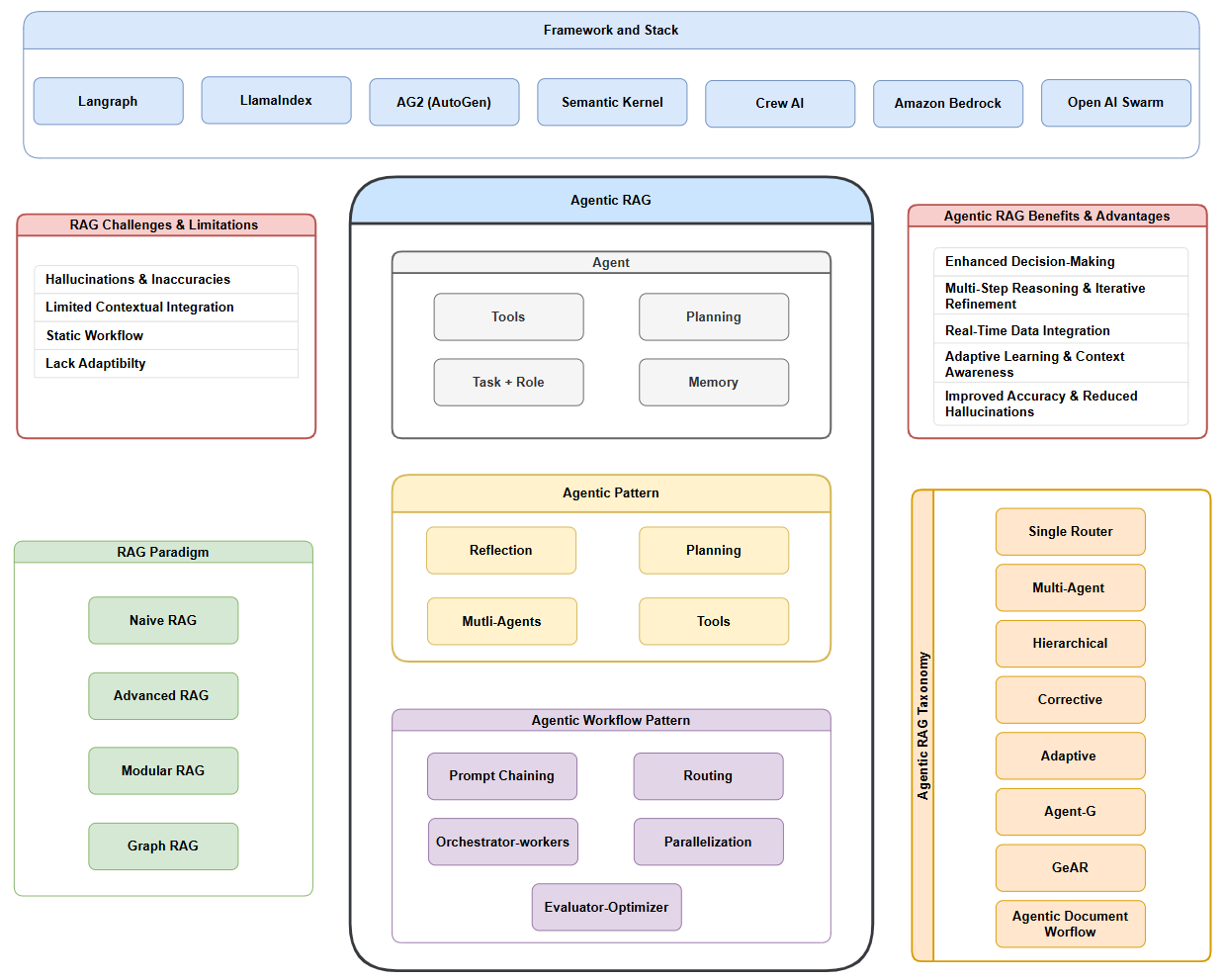
Agentic mode
The intelligence and adaptability of the Agentic RAG system stem from a series of well-defined Agentic patterns. These patterns enable agents to handle complex reasoning tasks, adapt to dynamic environments, and collaborate efficiently, thereby enhancing the capabilities of RAG.
1. Reflection
Definition: The agent evaluates its own decisions and outputs, identifies errors, and improves the results.
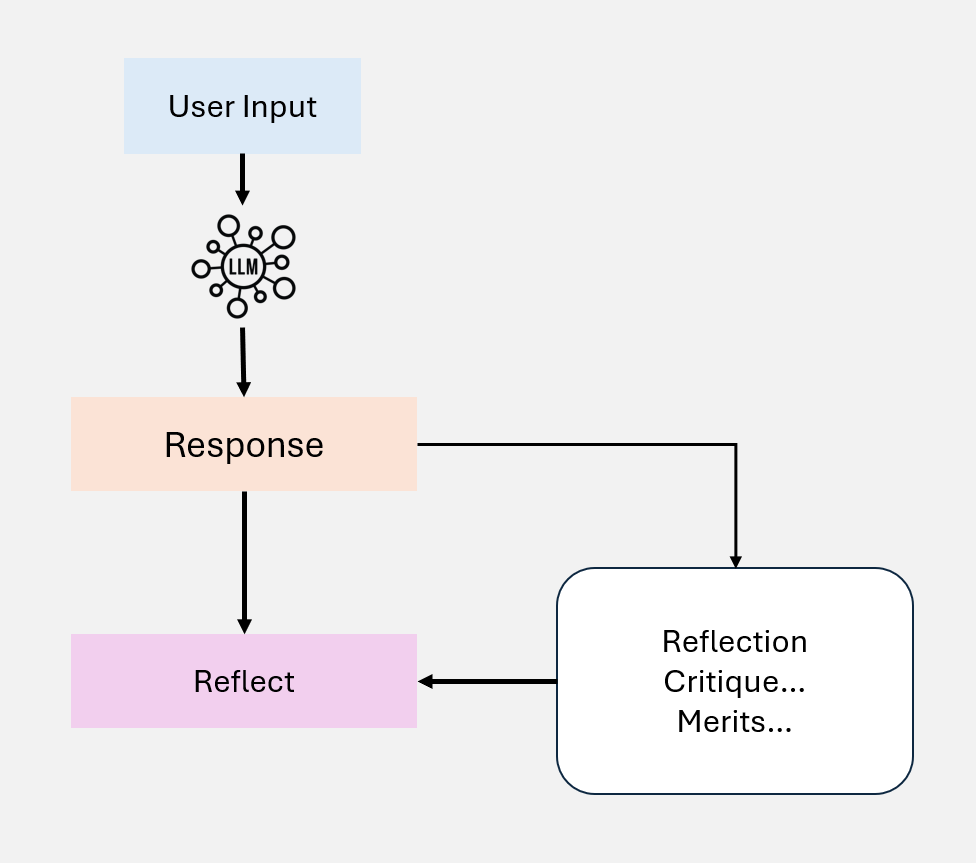
Core Advantages:
◦ Allows Agents to iteratively optimize results, continuously improving accuracy.
◦ Enhances the reliability of multi-step reasoning tasks, reducing error propagation.
Example:
In the medical diagnosis system, the Agent iteratively optimizes the diagnosis results based on the retrieved data, continuously adjusts its judgments, and provides more accurate medical suggestions.
2. Planning
Definition: An agent creates structured workflows and task sequences to solve problems efficiently.
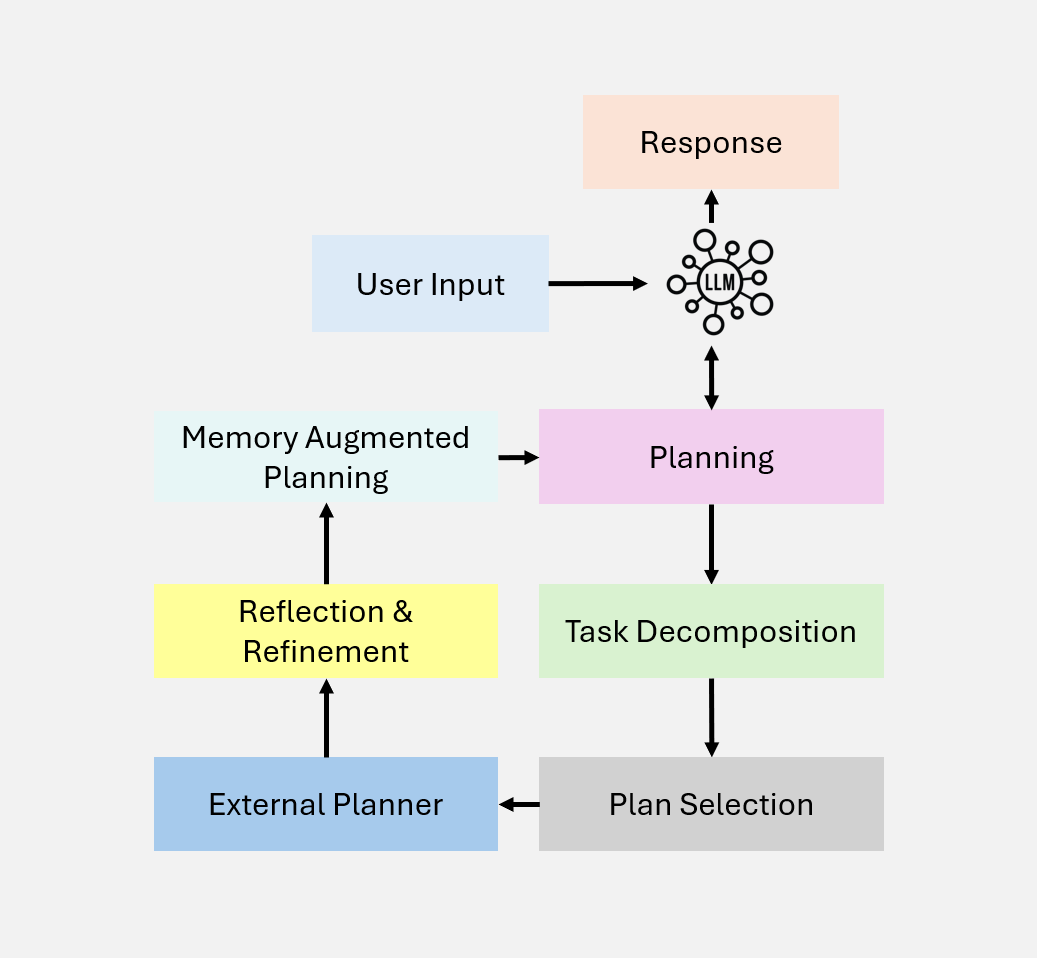
Core Advantages:
◦ Achieve multi-step reasoning by decomposing tasks, making complex problems easier to handle.
◦ Optimize task priorities to reduce computational overhead and improve execution efficiency.
Example:
In the financial analysis system, the Agent plans data retrieval tasks, prioritizes acquiring key financial data, assesses risks, and generates investment recommendations to improve the accuracy and efficiency of the analysis.
3. Tool Use
Definition: An agent interacts with external tools, APIs, and knowledge bases to retrieve and process data.
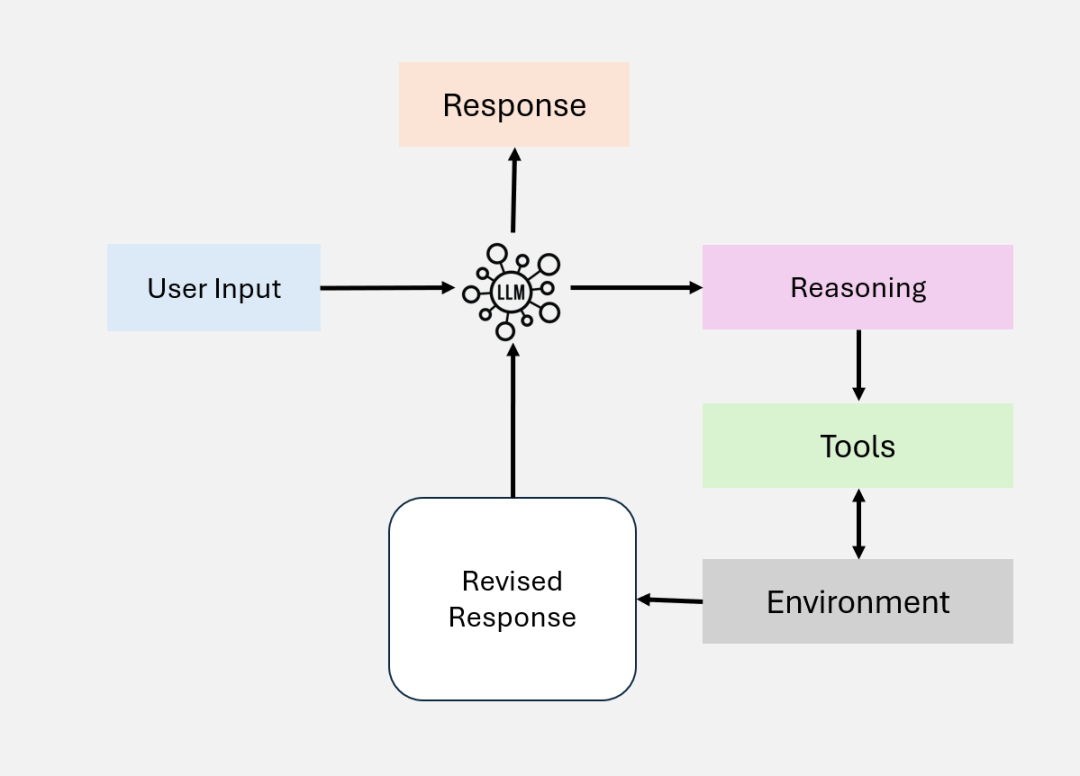
Core Advantages:
◦ Expand system capabilities and break free from the limitations of relying solely on pre-trained knowledge.
◦ By integrating external resources, support domain-specific applications to enhance professionalism and accuracy.
Example:
In the legal assistant system, the Agent can retrieve relevant clauses from the contract database and conduct compliance analysis based on specific regulations to assist in legal decision-making.
4. Multi-Agent Collaboration
Definition: Multiple agents collaborate to solve complex tasks through division of labor, and share information and results.
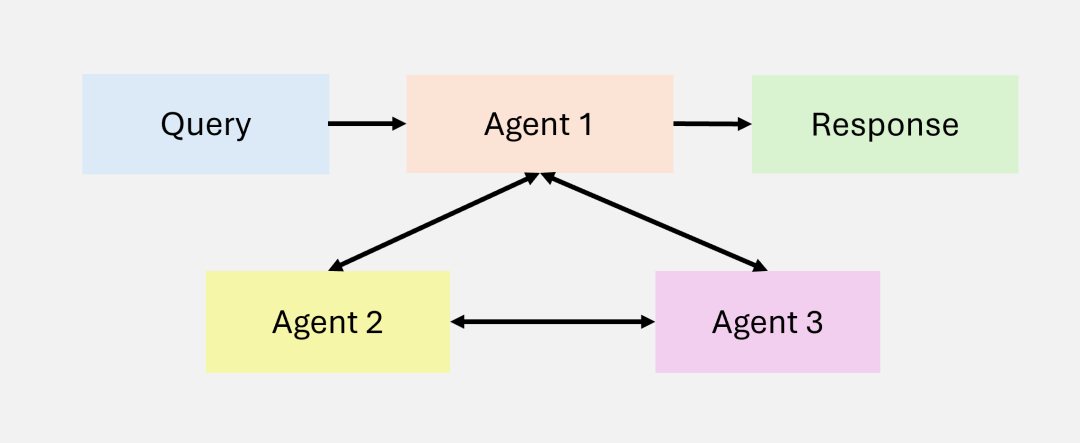
Core advantages:
◦ Efficiently handle large-scale and distributed problems, improving system throughput and response speed.
◦ Integrate the expertise of multiple Agents to achieve more accurate and comprehensive task execution.
Example:
◦ Customer Support System: Different agents collaborate to complete tasks such as knowledge retrieval, response generation, and follow-up, improving customer service efficiency.
◦ Legal Research System: Conducts legal literature retrieval and information analysis through a multi-agent workflow, generating accurate legal insights.
The Importance of the Agentic Mode
These models form the core pillars of the Agentic RAG system, enabling it to:
◦ Dynamically adapt to task requirements and flexibly adjust strategies based on different scenarios.
◦ Optimize decision-making through self-evaluation, continuously improving reasoning ability and accuracy.
◦ Leverage external resources for domain-specific reasoning, enhancing professionalism and practicality.
◦ Collaborate to handle complex distributed workflows, improving task execution efficiency and scalability.
Agentic Workflow Pattern: An Adaptive Strategy for Dynamic Collaboration
The Agentic workflow model helps build LLM-based applications and optimize their performance, accuracy, and efficiency. Different methods are suitable for different scenarios depending on the complexity of the tasks and processing requirements.
1. Prompt Chaining: Improving Accuracy through Sequential Processing
Definition:
A prompt chain breaks down complex tasks into multiple steps, where each step depends on the result of the previous one. This structured approach improves accuracy by simplifying subtasks, but it may increase latency due to sequential execution.

Applicable scenarios:
◦ Suitable for tasks that can be decomposed into fixed subtasks, where each step is crucial to the final result.
◦ Suitable for situations where step-by-step reasoning can improve accuracy.
Example Applications:
◦ Multilingual Marketing Content Generation: First, generate the original content, then translate it into another language while ensuring semantic and tonal consistency.
◦ Document Writing Process: First, create an outline, then check for completeness, and finally write the full text to ensure a clear structure and logical coherence.
2. Routing: Directing the input to the dedicated process.
Definition:
Routing classifies the input and assigns it to the appropriate dedicated prompt or processing workflow. This method ensures that different types of queries or tasks are handled independently, thereby improving efficiency and response quality.
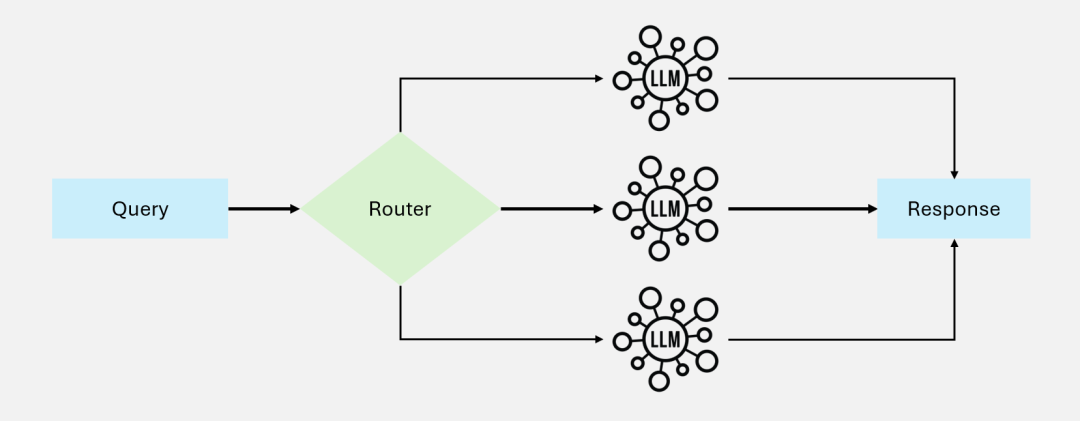
Applicable scenarios:
• Applicable to situations where different input types require different processing methods to ensure targeted optimization.
• Applicable to optimizing computing resources to ensure that each type of task is processed in the most suitable way.
Example applications:
• Customer service system classification: Automatically classify user queries into technical support, refund requests, or general inquiries, and assign them to the corresponding customer service processes.
• Intelligent computing resource allocation: Assign simple queries to lightweight models to reduce costs, while directing complex requests to advanced models to ensure high-quality responses.
3. Parallelization: Accelerate processing by concurrent execution.
Definition:
Parallelization involves breaking a task into multiple independent processes and running them simultaneously to reduce latency and increase throughput. There are two types of parallelization:
◦ Sectioning: Divide the task into independent subtasks and process them separately.
◦ Voting: Generate multiple outputs and improve accuracy through comparison.
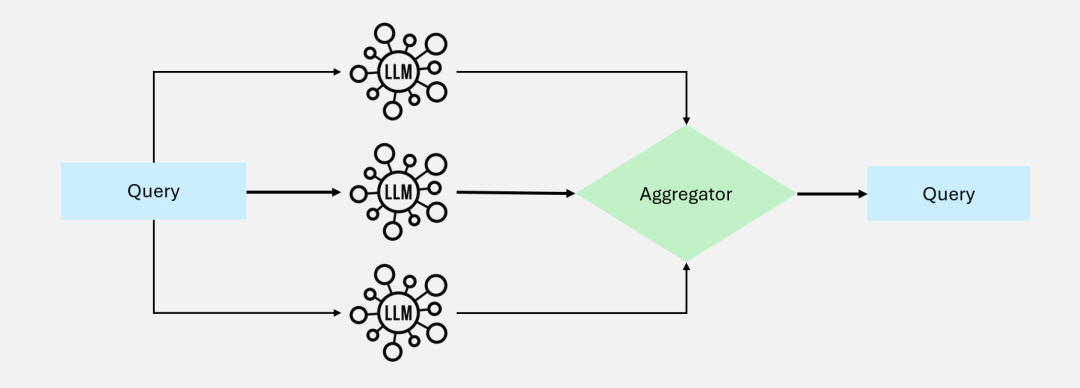
Applicable scenarios:
◦ Applicable when tasks can be executed independently to improve processing speed.
◦ Applicable to situations where multiple outputs are needed to increase confidence.
Example Applications:
◦ Sectioning: In content moderation tasks, one model filters out inappropriate content while another generates responses. Parallel processing improves efficiency.
◦ Voting: Use multiple models to cross-check code vulnerabilities or validate decisions in content moderation, enhancing judgment accuracy.
4. Orchestrator-Workers Pattern: Dynamic Task Allocation
Definition:
In this pattern, a central orchestrator is responsible for dynamically decomposing tasks, assigning subtasks to dedicated worker models for execution, and finally integrating the results. Unlike parallelization, it can adaptively adjust the task decomposition method according to the complexity of the input.

Applicable scenarios: It is suitable for tasks that require dynamic task decomposition and real-time adjustment, especially when subtasks cannot be predefined.
Example Applications:
◦ Automated Code Modification: Automatically modify multiple files in the codebase according to the type of requested changes, and ensure consistency.
◦ Real-time Information Retrieval and Comprehensive Analysis: Collect and integrate relevant information from multiple sources to generate complete and accurate research reports.
5. Evaluator-Optimizer Model: Optimizing the output through iterative refinement.
Definition:
The assessment-optimization workflow improves content quality in an iterative manner. It first generates an initial output and then uses the evaluation model to provide feedback, continuously optimizing and refining the results.
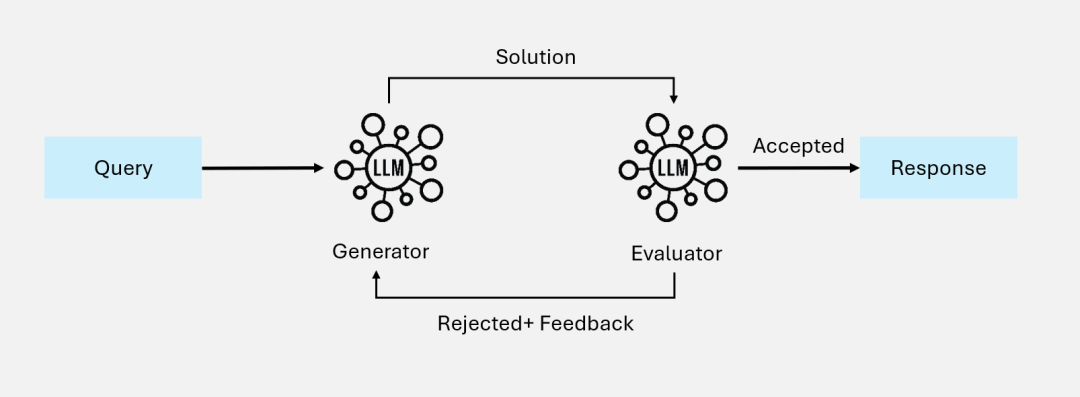
Applicable scenarios: It is suitable for tasks where iterative optimization can significantly improve the output quality, especially in cases with clear evaluation criteria.
Example Applications:
◦ Literary Translation Optimization: Ensuring the translation is both accurate and consistent with the original style through multiple rounds of evaluation and adjustment.
◦ Iterative Research Queries: Improving and supplementing based on previous search results to enhance the precision and completeness of the information.
Types of Agentic RAG Systems
The Agentic RAG system encompasses a variety of architectures and workflows, each optimized for specific tasks and levels of complexity. Below is a detailed classification of these systems:
1.Single-Agent RAG
Core idea: The retrieval and generation processes are managed by a single autonomous Agent.
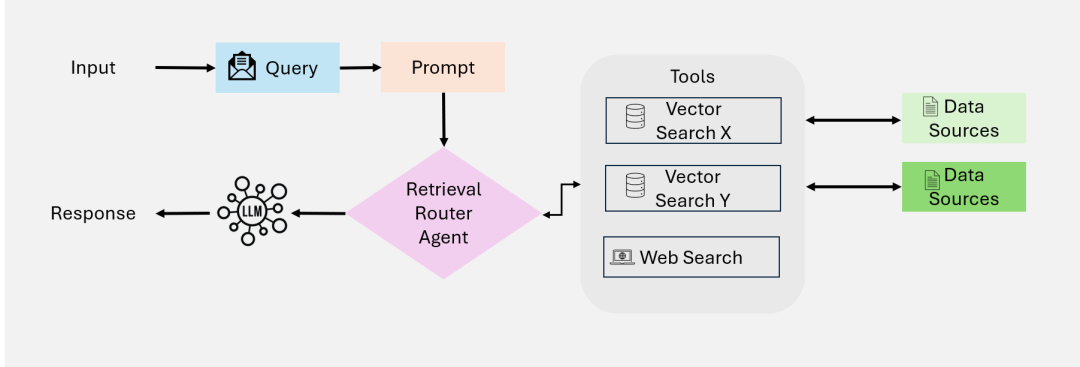
Workflow:
◦ Submit a query to the Agent.
◦ The Agent retrieves relevant data from external sources.
◦ Process the data and generate a response.
Advantages:
◦ Applicable to simple use cases.
◦ Simple to implement and maintain.
Limitations:
◦ Limited scalability.
◦ Incapable of effectively handling multi-step reasoning or big data set tasks.
2. Multi-Agent RAG
Core idea: A group of agents collaborate to perform complex retrieval and reasoning tasks.
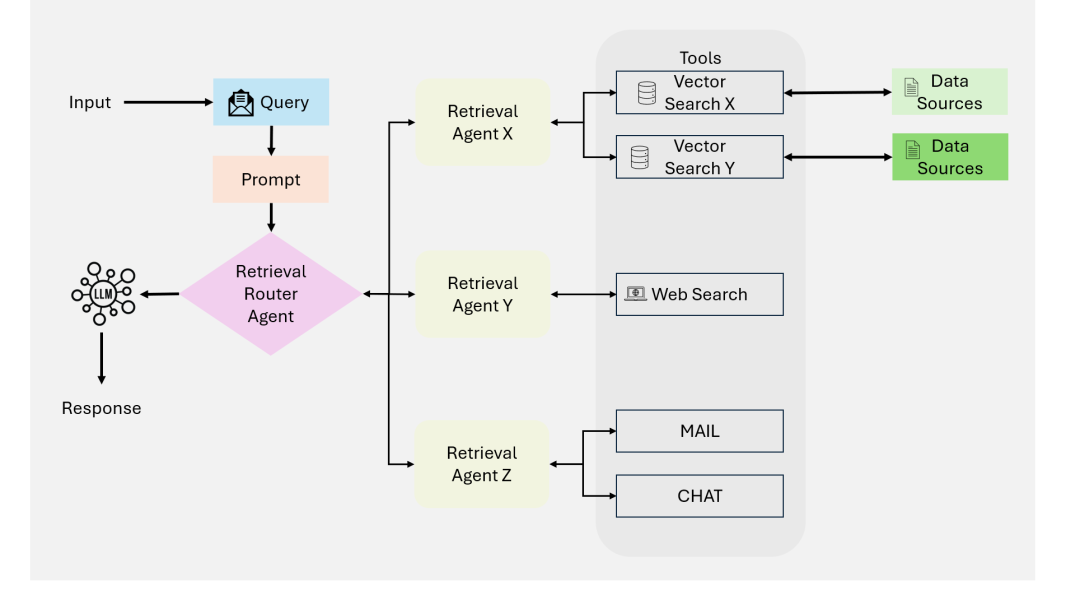
Workflow:
◦ Agents dynamically assign tasks (such as retrieval, reasoning, synthesis).
◦ Each Agent focuses on a specific subtask.
◦ Aggregate and integrate results to generate a consistent output.
Advantages:
◦ More suitable for distributed and multi-step tasks.
◦ Improve modularity and scalability.
Limitations:
◦ As the number of Agents increases, the coordination complexity rises.
◦ There is a risk of redundancy or conflict among Agents.
3. Hierarchical Agentic RAG
Core idea: Organize Agents into a hierarchical structure to better manage task priorities and assignments.
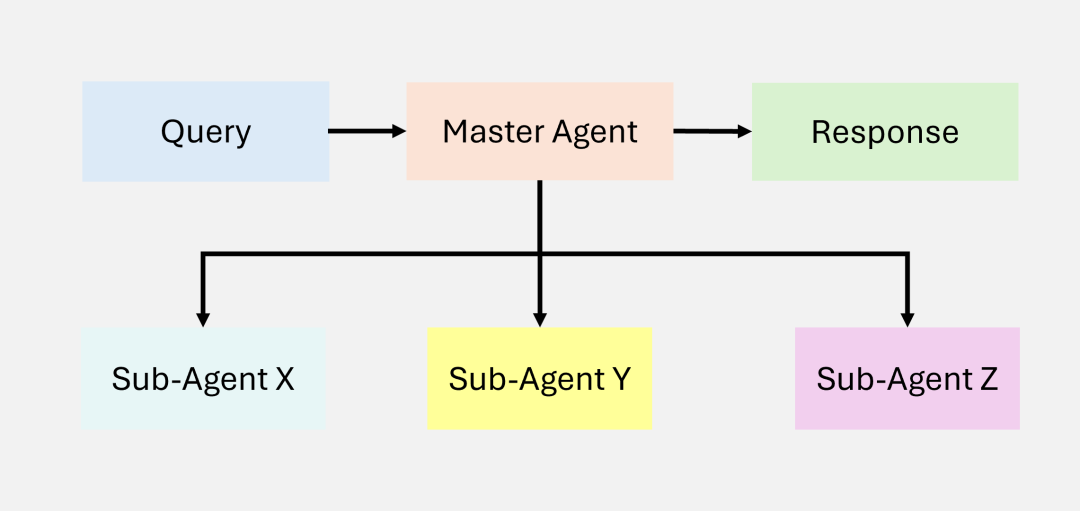
Workflow:
• The top-level Agent is responsible for coordinating the subtasks of lower-level Agents.
• Each lower-level Agent handles a specific part of the process.
• Results are iteratively optimized and integrated at a higher level.
Advantages:
◦ Suitable for large-scale and complex tasks.
◦ Modular design promotes specialization.
Limitations:
◦ A complex orchestration mechanism is required.
◦ There may be bottlenecks in the upper layers of the hierarchical structure.
4. Corrective Agentic RAG
Core idea: The feedback loop enables the Agent to repeatedly evaluate and optimize its output.
Workflow:
◦ The Agent generates an initial response.
◦ The evaluation module checks the response for errors or inconsistencies.
◦ The Agent optimizes the response based on the feedback.
◦ Steps 2 – 3 are repeated until the output meets the quality standards.
Advantages:
◦ It has high accuracy and reliability through iterative optimization.
◦ It is suitable for error-prone or high-risk tasks.
Limitations:
• High computational cost.
• The feedback mechanism must be well-designed to avoid deadlocks.
5.Adaptive Agentic RAG
Core idea: Dynamically adjust the retrieval strategy and workflow according to task requirements.
Workflow:
◦ The Agent evaluates the query and its context.
◦ Adjusts the retrieval strategy in real time based on available data and user needs.
◦ Generates a response comprehensively using a dynamic workflow.
Advantages:
◦ Highly flexible, adaptable to various tasks and dynamic environments.
◦ Improve context relevance and user satisfaction.
Limitations:
◦ Designing a robust adaptation mechanism is challenging.
◦ Real-time adjustment incurs additional computational overhead.
6. Graph-Based Agentic RAG
The graph-based RAG system expands the traditional RAG system by integrating graph-structured data into the reasoning process.
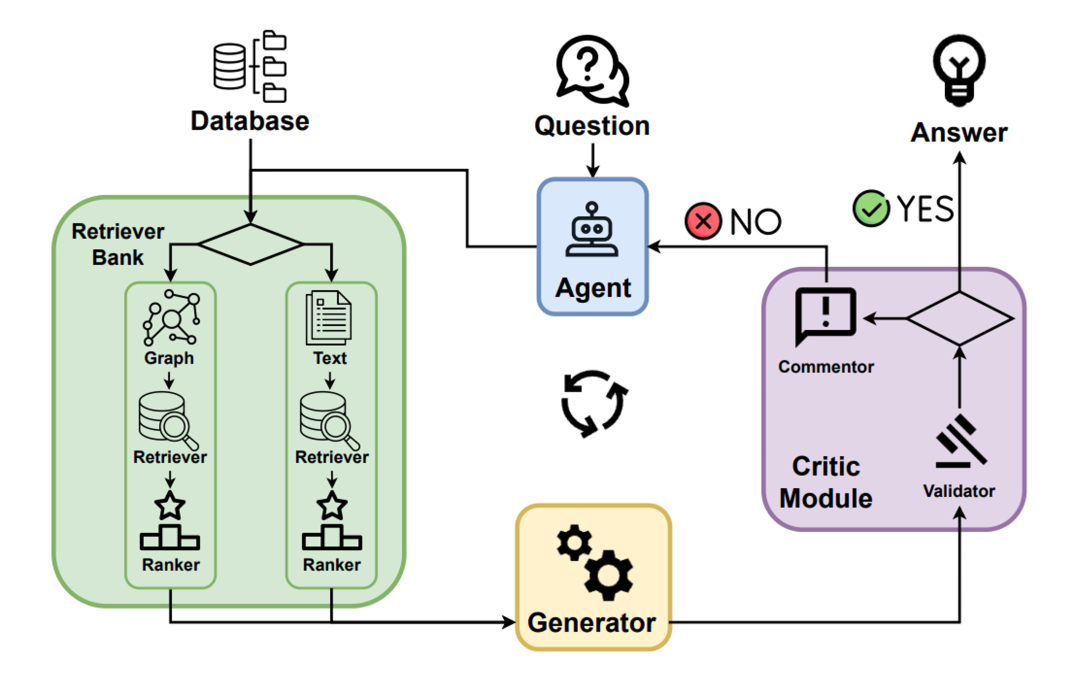
6.1 Agent-G: An Intelligent Agent Framework for Graph RAG
Core Idea: Dynamically allocate tasks to specialized Agents through a graph knowledge base and feedback loop.
Workflow:
◦ Extract relationships (e.g., disease-to-symptom mappings) from the graph knowledge base.
◦ Supplement with unstructured data from external sources.
◦ Use an evaluation module to verify results and perform iterative optimization.
Advantages:
◦ Combines structured and unstructured data.
◦ Modular design, suitable for handling complex tasks.
◦ Ensures high accuracy through iterative optimization.
6.2 GeAR: Graph-enhanced Agent for Retrieval-Augmented Generation (RAG)
Core Idea: Enhance the RAG system through graph expansion techniques and an Agent-based architecture.
Workflow:
◦ Expand the graph related to the query to better understand relationships.
◦ Utilize specialized Agents for multi-hop reasoning.
◦ Integrate structured graph information and unstructured information to generate responses.
Advantages:
◦ Excellent performance in multi-hop reasoning scenarios.
◦ Improved accuracy in deep context tasks.
◦ Dynamically adapts to complex query environments.
7. Agentic Document Workflows,ADW
The intelligent document workflow expands the traditional RAG system by automating document-centric processes through Agents.
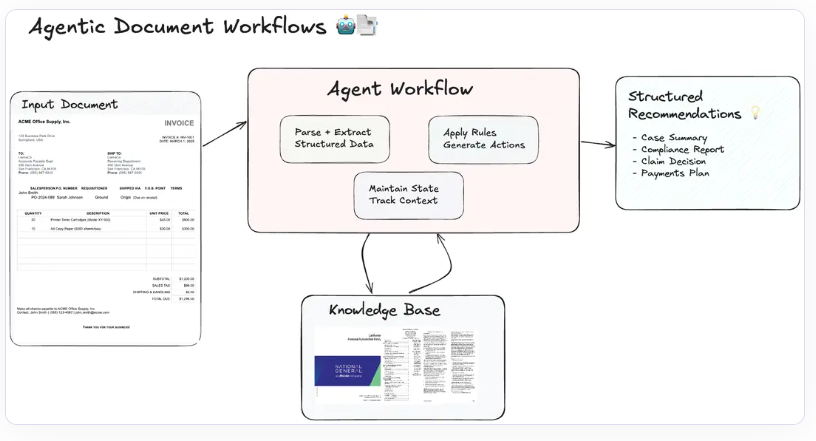
Workflow:
◦ Document Parsing and Structuring: Extract structured data from documents such as invoices or contracts.
◦ Status Maintenance: Track contextual consistency within multi-step workflows.
◦ Knowledge Retrieval: Retrieve relevant reference materials from external sources or domain-specific databases.
◦ Intelligent Orchestration: Apply business rules, perform multi-hop reasoning, and coordinate external APIs.
◦ Actionable Output Generation: Generate structured outputs tailored for specific purposes (e.g., reports or summaries).
Key Features and Advantages:
◦ Status Maintenance: Ensures consistency in multi-step workflows.
◦ Domain-Specific Intelligence: Adapts according to the rules of specific domains.
◦ Scalability: Efficiently handles large-scale document processing tasks.
◦ Boosts Productivity: Reduces manual workload and enhances human expertise.
Comparative Analysis of Agentic RAG Frameworks
The following table provides a comprehensive comparative analysis of three architectural frameworks: Traditional RAG, Agentic RAG, and Intelligent Document Workflow (ADW). This analysis highlights their respective advantages, disadvantages, and most suitable application scenarios, offering valuable insights into their applicability for different use cases.
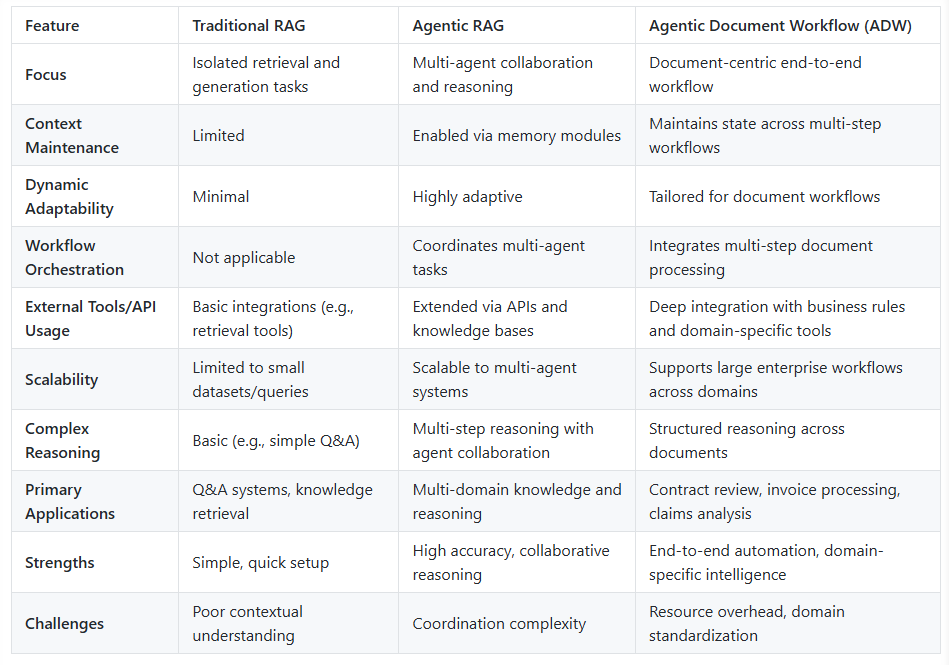
Main Conclusions:
• Traditional RAG is best suited for simple tasks that require basic retrieval and generation capabilities.
• Agentic RAG excels in multi-agent collaborative reasoning and is suitable for more complex, multi-domain tasks.
• Intelligent Document Workflow (ADW) provides tailored, document-centric solutions, suitable for enterprise-level applications such as contract analysis and invoice processing.
Application fields
The Agentic RAG system has transformative potential across multiple industries, enabling intelligent retrieval, multi-step reasoning, and dynamic adaptation to complex tasks. Below are the applications of the Agentic RAG system in some key areas, demonstrating its significant impact:
1. Healthcare and Personalized Medicine
◦ Problem: Quickly retrieve and synthesize medical knowledge for diagnosis, treatment planning, and research.
◦ Applications:
• Utilize multimodal data (such as medical records, medical literature) to support clinical decision-making systems.
• Automatically generate medical reports and incorporate relevant contextual references.
• Use multi-hop reasoning to analyze complex relationships (such as the associations between diseases and symptoms or the relationships between treatments and outcomes).
2. Education and Personalized Learning
◦ Problem: Provide personalized and adaptable learning experiences for different learners.
◦ Applications:
• Design intelligent tutors that can retrieve knowledge in real time and provide personalized feedback.
• Generate customized educational content according to students’ progress and preferences.
• Conduct collaborative learning simulations through multi-agent systems.
3. Legal and Contract Analysis
◦ Issue: Analyze complex legal documents and extract actionable insights.
◦ Applications:
• Summarize contracts and compare clauses to ensure consistency with legal standards.
• Retrieve precedent cases and regulatory guidelines to ensure compliance.
• Use iterative workflows to identify inconsistencies or conflicts in contracts.
4. Financial and Risk Analysis
◦ Issue: Analyze large-scale financial datasets to identify trends, risks, and opportunities.
◦ Applications:
• Automatically generate financial summaries and investment recommendations.
• Perform real-time fraud detection through multi-step reasoning and data correlation.
• Use graph-based workflows for scenario modeling in risk analysis.
5. Customer Support and Virtual Assistants
◦ Issue: Provide context-aware, dynamic responses to customer inquiries.
◦ Applications:
• Build AI-powered virtual assistants for real-time customer support.
• Adaptive systems improve responses by learning from user feedback.
• Multi-agent orchestration handles complex multi-query interactions.
6. Application of Graph Enhancement in Multimodal Workflows
◦ Problem: Handling tasks that require relationship understanding and integration of multimodal data.
◦ Applications:
• Graph-based retrieval systems for connecting structured and unstructured data.
• Enhancing reasoning workflows in fields such as scientific research and knowledge management.
• Generating actionable outputs through comprehensive insights across text, images, and structured data.
7. Document-Centric Workflow
◦ Problem: Automating complex workflows involving document parsing, data extraction, and multi-step reasoning.
◦ Applications:
• Invoice Payment Workflow:
■ Parse invoices and extract key details (e.g., invoice number, vendor information, payment terms).
■ Retrieve relevant vendor contracts to verify terms and compliance.
■ Generate a payment recommendation report, including cost-saving suggestions (e.g., early payment discounts).
• Contract Review:
■ Analyze key clauses and compliance issues in legal contracts.
■ Automatically identify risks and provide actionable recommendations.
• Insurance Claim Analysis:
■ Automate the review of claims, extract policy terms, and calculate payouts based on predefined rules.
◦ Key Advantages:
• State Maintenance: Track the context of documents across workflow stages.
• Domain-Specific Intelligence: Apply tailored rules based on industry-specific needs.
• Scalability: Efficiently process large volumes of enterprise documents.
• Productivity Enhancement: Reduce manual workload and augment the capabilities of human experts.
Challenges and Future Directions
Despite the great potential of the Agentic RAG system, there are still some challenges and problems to be solved:
challenge
1. Coordination Complexity in Multi-Agent Systems:
• Managing communication and collaboration among multiple Agents may lead to inefficiency and increased computational overhead.
• How to balance task allocation and resolve conflicts between Agents remains a key challenge.
2. Ethics and Responsible AI:
• Ensuring bias-free retrieval and decision-making processes in sensitive domains such as healthcare and finance.
• Addressing data privacy issues and building transparent systems that comply with ethical standards.
3. Scalability and Latency Issues:
• Ensuring system response times are not affected when processing large-scale datasets and high-frequency queries.
• Addressing latency issues in multi-agent and graph-based workflows.
4. Hybrid Human-AI Collaboration:
• Designing systems that effectively combine human supervision with autonomous Agents, especially for tasks requiring domain expert involvement.
• Maintaining user trust and control while leveraging the advantages of AI Agents.
5. Expansion of Multimodal Capabilities:
• Integrating text, image, audio, and video data to generate richer and more comprehensive outputs.
• Handling the complexity of multimodal reasoning in real-time applications.
Future Direction
1. Enhanced Agent Orchestration:
◦ Develop more robust coordination frameworks to adapt to hierarchical and multi-agent systems.
◦ Introduce adaptive learning mechanisms to dynamically improve task allocation.
2. Domain-Specific Applications:
◦ Customize Agentic RAG systems for domains such as legal analysis, personalized education, and advanced scientific research.
3. Ethical AI and Governance Frameworks:
◦ Develop tools to monitor, explain, and mitigate biases in AI outputs.
◦ Establish policies and guidelines for ethical deployment in high-risk environments.
4. Efficient Graph-Based Reasoning:
◦ Optimize graph-based workflows to accommodate large-scale real-world applications.
◦ Explore hybrid approaches that combine graph-based reasoning with neural networks.
5. Human-Agent Collaboration:
◦ Design intuitive interfaces and workflows to empower humans to interact effectively with Agentic RAG systems.
◦ Focus on explainability and user-centered design.
Related Posts

